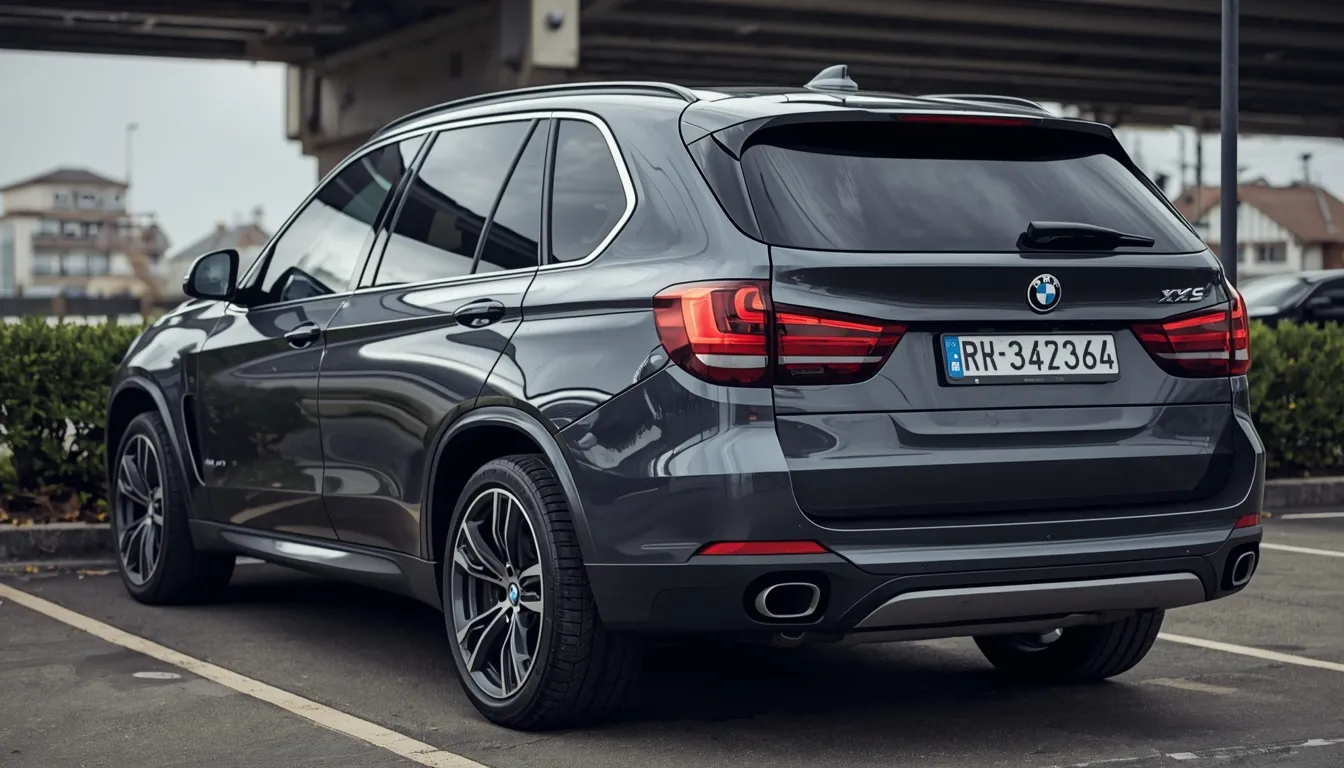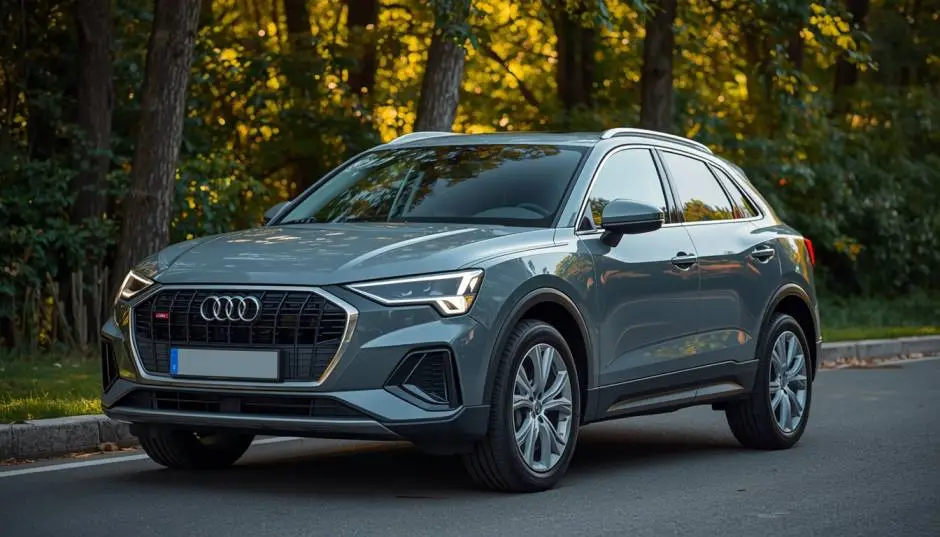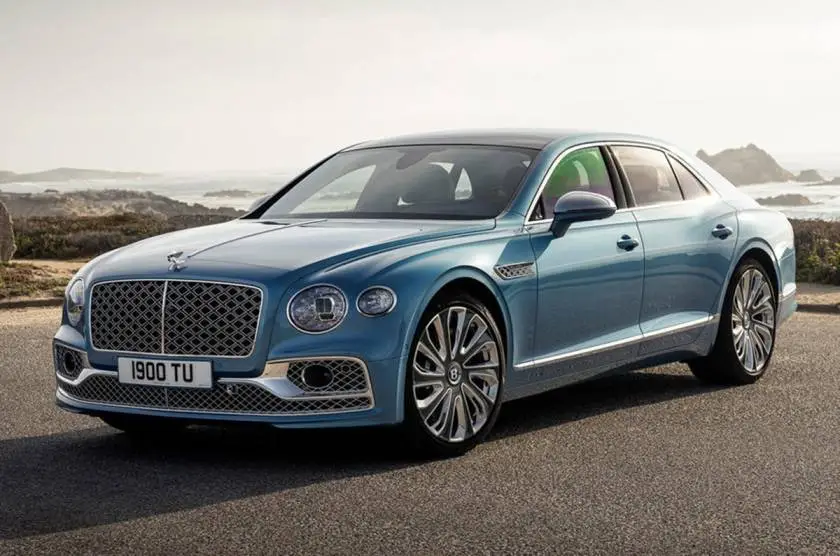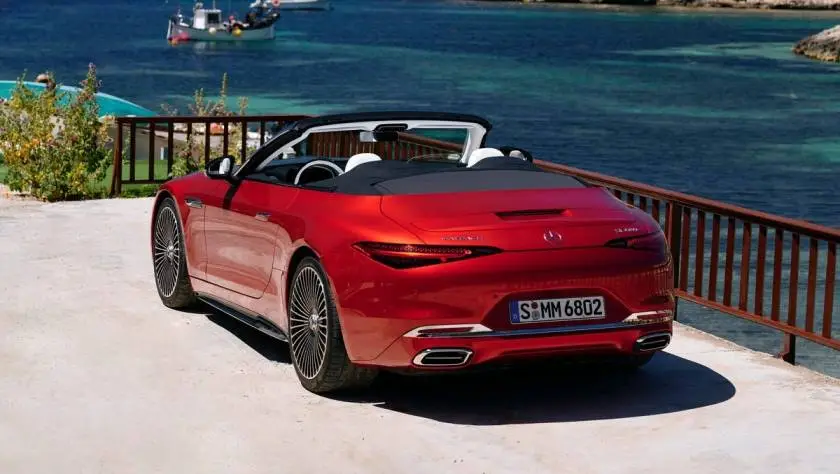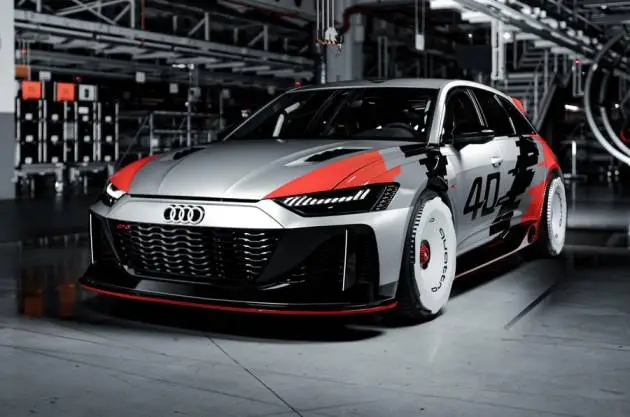Ultimate BMW B48 Engine Guide
At this point, the BMW B48 engine has been virtually for 9 years and has powered some of BMW’s most popular vehicles including the majority of F30, G20, and G30 models. When the B48 was released in 2014, it replaced the popular N20 engine as the newest iteration of BMW’s turbocharged inline-4 formula.
As part of the BMW modular B-Series engine platform, the B48 shares much in worldwide with the larger B58 inline-6. Like the other engines in the B-series platform, the B48 features a closed-deck aluminum block, dual-VANOS variable valve timing, Valvetronic variable valve lift technology, uncontrived injection, and a twin-scroll turbocharger. US models of the B48 engine often range in power output from 248-302 horsepower and 258-332 lb-ft of torque.
So far, the BMW B48 has proven to not only be extremely capable, but unsurmountable as well. With very few worldwide problems, the B48 is proving to be a very reliable workhorse that isn’t likely to leave you stranded. That moreover plays well into the aftermarket potential for the B48, of which there is plenty.
In this ultimate B48 engine guide, we’ll imbricate everything you need to know well-nigh the 2.0L turbocharged inline-4, including B48 engine specs, popular B48 engine modifications, and B48 reliability.
BMW B48 Engine Specs
| Engine | BMW B48 Engine |
| Configuration | Inline 4 |
| Displacement | 2.0L (1,998 cc) |
| Aspiration | Single Twin-Scroll Turbocharged |
| Valvetrain | DOHC, Dual VANOS w Valvetronic |
| Block/Head | Aluminum/Aluminum |
| Bore x Stroke | 82.0 mm x 94.6 mm (3.23 in x 3.72 in) |
| Compression Ratio | 9.5:1 / 10.2:1 / 11.0:1 |
| Weight | Long Woodcut ≈ 427 lbs |
| Horsepower | 154-302 hp @ 5,000-6,600 RPM |
| Torque (lb-ft) | 184-332 lb-ft @ 1,450-4,000 RPM |
As part of the BMW B-Series engine platform, the B48 is extremely similar in terms of overall construction to the BMW B38, B46, and B58 engines. Additionally, the B48 shares many similar diamond characteristics with the N20 4-cylinder engine that it replaced.
As with all of the other B-Series engines, the B48 uses entirely aluminum construction including both the woodcut and cylinder head. Compared to the previous BMW N20 4-cylinder engine, the B48 switched to a sealed deck woodcut as per the B-Series design. That increases the engine’s overall strength but moreover requires it to have a increasingly substantial cooling system than the previous engine.
Similar to the BMW B58, the B48 comes from the factory with some pretty impressive internals. The B48 features forged rods and a forged crankshaft out of the gate. With that stuff said, the B48 pistons themselves are still tint and are a worldwide point of failure on B48 power builds.
The B48 is full of other modern BMW technology used to modernize performance and engine efficiency. Like the previous BMW N20 engine, the B48 features dual-VANOS variable valve timing, Valvetronic variable valve lift, and uncontrived injection. BMW moreover opted to use a single twin-Power turbocharger for the B48 which provides largest throttle response at low RPMs while moreover helping emissions efficiency than older true twin-turbo setups found on engines like the BMW N54.
BMW B46 vs B48
While the BMW B48 is an extremely efficient engine, BMW was forced to create flipside variant of the B48 to comply with US SULEV emissions requirements. In essence, SULEV (super-ultra-low emissions vehicle) regulations mandate that the vehicle in question has to produce 90 percent fewer emissions than a standard gasoline vehicle. 17 US states pinion to SULEV regulations. As a result, the BMW had to modify the B48 to meet throes requirements.
That is where the BMW B46 engine comes into the picture. The B48 isn’t the first engine that BMW modified to meet SULEV restrictions. For example, the previous N20 engine had a SULEV-compliant N26 variant as well. Like the N26 to the N20, the B46 is nearly identical to the B48 but with a few tweaks.
Most of the major emissions-improving tweaks are the result of factory tuning modifications for the B46. There are likely some minor hardware changes as well like variegated sensors, a variegated air intake design, modified catalytic converters and other emissions-focused component changes. Plane with the slight changes, the B46 and B48 act and perform nearly identically. Both engines are rated at the same power and torque, but the B46 gets slightly largest municipality MPG.
While the engines are nearly identical, not all B48 aftermarket modifications will work with a B46. For example, B46 and B48 engines require variegated downpipes, as the outlet shape differs for both engines. Some B48 intakes might not be uniform with the B46 as well.
BMW B48 2.0i vs 3.0i vs M Variants
While there are quite a few exceptions to this rule, the B48 was used primarily in both 2.0i and 3.0i cars in the BMW model lineup. For example, both the G01 X3 xDrive20i and G01 xDrive30i use the B48 engine, just variegated subvariants of the engine. In the US, 20i models primarily received the B48B20M0 and B48A20M1, with the latter stuff used primarily in the MINI Cooper S. The most worldwide 30i B48 variant found in the US include the B48B20O0 and B48B20O1.
Generally speaking, 20i and 30i versions of the BMW B48 are extremely similar in construction. They full-length scrutinizingly all of the same components except for their pistons. 20i B48s have a higher 11.0:1 pinch ratio compared to the 30i B48’s 10.2:1 pinch ratio.
That might come as a surprise, as higher pinch often results in increasingly power. However, To requite the 30i B48 variants increasingly power, BMW decided to lower the pinch ratio considering it reduces the mixture temperature and enables a broader ignition timing whop range. As a result, it is often harder to get increasingly power out of 30i B48 variants than 20i variants from a tuning perspective. With that stuff said, both variants are still extremely receptible to modifications.
If you are interested in learning increasingly well-nigh B48 20i vs B48 30i engines, take a squint at our defended guide on the subject.
The 302 horsepower B48A20T1 variant of the B48, used in M-performance models, received some spare goodies to help it withstand higher uplift pressure and increasingly strenuous forces. The main improvements include a revised crankshaft, larger main bearings, and lower pinch pistons. The pistons lowered the B48A20T1’s pinch to 9.5:1, giving it a bit increasingly wiggle room with the spare boost.
What Cars Use the BMW B48 Engine?
The list of vehicles that came factory equipped with the B48 engine is pretty extensive. A lot of that has to do with the fact that the B48 is used by three variegated manufacturers, including BMW, MINI, and plane Toyota. The BMW B48 has 11 variegated wiring variants, most of which only differ in terms of a tune and many of which aren’t misogynist in US models. The 2.0L B48 is a very versatile engine, and as a result BMW has used it in a staggering number of cars from 2014 onward.
- 2016-2019 120i
- 2019-present M35i
- 2016-present 220i / 230i
- 2019–present 228i Gran Coupé xDrive
- 2019-present M235i
- 2016-present 320i / 330i / 330e
- 2016-present 420i / 430i
- 2017-present 520i / 530i
- 2017-present 630i
- 2016-present X1 20i / 25i / 28i / 30i
- 2017-present X2 20i / 25i / 28i / 30i / M35i
- 2018-present X3 20i / 30i / 30e
- 2018-present Z3 20i / 30i
- 2019-present Toyota Supra
- 2019–present Clubman JCW
- 2019–present Countryman JCW
- 2020–present MINI John Cooper Works GP
- 2014–present MINI Cooper S
Stock BMW B48 Engine Performance
When it comes to the BMW B48’s performance directly off the turnout line, it must be said that it produces some pretty impressive performance for stuff a 2.0L 4-cylinder engine. With the most worldwide US B48 variants producing between 248 and 305 horsepower, there are very few factory engines with the same ostracism that are worldly-wise to equal it.

As you can see from the dyno orchestration above, the B48 delivers power smoothly and predictably which is exactly what it was designed to do. Naturally aspirated BMW inline-6s are notorious for having very steady power and torque curves and it must be said that they are tropical to perfecting that formula for other engine architectures too.
Once the B48 reaches peak torque at virtually 2,400 rpm, it stays exceedingly resulting until it drops off virtually the 5,000 rpm mark. It is a similar story for the B48’s power delivery, creating peak power tropical to 5,000 rpm, where the torque begins to fade, and holding steady through redline. The nearly firsthand torque can be attributed to the B48’s twin-power turbo which spools faster and provides increasingly low-end torque than a traditional twin-turbo setup like the one found on the BMW N54 engine.
While there are unquestionably increasingly powerful BMW engines in the lineup currently, with the B58 stuff a perfect example, the B48 still supplies a passable value of grunt in factory form. Luckily, if you aren’t impressed with the B48 in factory form, the 2.0L inline-4 is highly receptive to performance modifications.
BMW B48 Engine Mods and Upgrades
For the last 20 years, all of BMW’s turbocharged engines have been known to be extremely receptive to aftermarket engine upgrades and modifications. The BMW B48 is no exception to that rule, as there are numerous quality engine mods misogynist for the 2.0L BMW inline-4. With that stuff said, mod support for the B48 isn’t nearly as wide-stretching as it is for the larger B58 inline-6. For that reason, there is a pretty cut-and-dry formula for making increasingly power from the B48.
B48 Tune
Best BMW B48 Piggyback Tune: Burgertuning.com
Best BMW B48 Wink Tune: Protuningfreaks.com
B48 Tune Power Gains: 40-80whp w/o spare modifications
Like the BMW turbocharged engine that came surpassing it and without it, a tune for the BMW B48 is how you’ll unlock most of the engine’s trapped potential. While a tune for the B48 will yield increasingly power when combined with the other engine modifications that we have listed here, there is still a notable value of power to be gained from plane a stock B48.
When it comes to B48 tune options, you have a nomination to make between two potential routes. One path is to install a B48 piggyback tune which fools the factory DME into yoyo that the engine is still running a stock tune and that boost, timing, and other related parameters haven’t been altered. The other route is a B48 wink tune, which rewrites the factory DME’s programming to run increasingly warlike boost. Both options are extremely popular on the BMW B58 and are easy to install and manage.
Overall, a B48 wink tune will requite you increasingly comprehensive tenancy over your tune. Wink tunes, like the bootmod3 B48 tune, indulge for precise map editing with the worthiness to modify and retread over 5,000 tables and engine parameters. While a B48 piggyback tune, like the one offered with the Burger Motorsports JB4, doesn’t indulge for quite the same level of customization, it is a very popular option in the BMW polity and can net up to 40whp on an otherwise stock vehicle.
B48 Upgraded Downpipe
Best BMW B48 Catless Downpipe: VR-Speed.com
Best BMW B48 High-Flow Downpipe: VR-Speed.com
As with any turbocharged engine, an upgraded downpipe can make a very noticeable difference to a B48’s performance in multiple variegated respects. The factory BMW B48 downpipe is restrictive to frazzle spritz due to the seated catalytic converter that hampers frazzle velocity. The solution to that is swapping out the factory downpipe for either a high-flow or catless B48 downpipe.
Ultimately, the nomination between either a high-flow or catless B48 downpipe depends on your preferences and needs. High-flow B48 downpipes retain a catalytic converter that flows significantly largest than the factory unit, while catless B48 downpipes get rid of the cat altogether. High-flow downpipes are a good option for B48 owners that aren’t looking for too much spare frazzle noise while moreover looking for a bit of widow performance and would like to remain emissions-compliant. Catless B48 downpipes provide the weightier performance but increase frazzle noise substantially, rationalization a slight frazzle smell inside the cabin, and will rationalization you to goof an emissions test.
The benefits of an upgraded BMW B48 downpipe go a bit vastitude just a few uneaten ponies. The increased frazzle spritz from an upgraded downpipe moreover allows the turbo to operate increasingly efficiently, leading to increasingly firsthand turbo response, largest throttle response, and largest turbo efficiency all around. You can expect to proceeds virtually 10-15 horsepower from a B48 high-flow downpipe and virtually 15-20 horsepower from a catless B48 downpipe with a respective tune.
B48 Intake Upgrade
Best BMW B48 Intake: Burgertuning.com
Intakes have unchangingly been one of the most popular modifications for BMW turbocharged engines for a couple of reasons. They’re cheap, easy to install, and provide both some fun and performance-oriented benefits for the B48 engine. It is moreover a key modification if you plan on doing spare power modifications to your B48 engine in the future.

While the factory BMW B48 sealed box intake isn’t terribly restrictive, the diamond isn’t as efficient as it could be. In fact, many B48 owners simply opt to alimony the factory intake components and simply install a larger and increasingly efficient reusable filter. With that stuff said, there are benefits to aftermarket performance intakes as well.
Most aftermarket B48 intakes are open-air designs, meaning that the filter is exposed to the rest of the engine bay. While that can typically rationalization higher intake air temps on naturally aspirated engines, it isn’t as much of an issue on intercooled engines like the B48. Open-air intakes for the B48 increase the value of air that is sucked into the engine which increases combustion, helps turbo efficiency and throttle response, and makes superstitious induction sounds. These benefits are inferential plane remoter when paired with a tune and other B48 performance mods.
If you want to know increasingly well-nigh B48 intakes and our intake suggestions, take a squint at our defended BMW B48 Intake Guide.
BMW B48 Engine Problems
Everything considered, the BMW B48 is an extremely reliable engine. That sentiment is true for all of the engines in the B-series family. Quite a few of the BMW B48’s engine problems are shared with the other engines in its engine family and with many other BMW engines that came surpassing it. With that stuff said, none of the issues on this list are truly worldwide in a traditional sense. Rather, these are the most likely B48 engine problems that you will wits at some point in the future.
If you would rather slosh this content via a video, trammels out our BMW B48 Worldwide Problems & Reliability video below:
BMW B48 Valve Imbricate Leaks
Valve imbricate gasket leaks have been a worldwide problem on BMW engines for decades now, and the B48 is not immune to them either. In fact, all of the BMW B-series engines are known to develop valve imbricate gasket leaks over time. The primary reason for valve imbricate leaks on the B48 is the upper operating temperature of the engine combined with the rubber/polymer gaskets that BMW chooses to use to seal the cylinder throne to the valve cover.
Ultimately, valve imbricate gaskets will unchangingly start leaking eventually, and they usually last until virtually the 80,000-100,000-mile mark making them a pretty infrequent maintenance item. With that stuff said, a B48 valve imbricate gasket replacement can be a pricey repair, as the job takes numerous specialty tools and the removal of numerous other engine components including the injectors. As B48s protract to age, leaking valve imbricate gaskets are guaranteed to wilt a increasingly frequent problem on these engines.
B48 Cylinder Throne Ventilation Line Issue
This issue is a relatively new one to the B48 polity and revolves virtually a recall on the B48 engine. BMW issued a technical service message in April of 2022 outlining a potentially serious problem with a coolant ventilation line on the cylinder throne of many US-spec B48 engines. The message mentions that the factory plastic ventilation line is prone to breaking at the cylinder throne due to excessive heat, causing a rapid loss of coolant from the engine.
If left unchecked the wrenched coolant line could phlebotomize the engine of all of its coolant, causing a severe overheating event that could do permanent forfeiture to the engine. BMW’s fix is to replace the factory plastic coolant ventilation line with a new rubber one that reduces the chances of the line itself breaking or cracking. According to multiple BMW techs, the coolant ventilation line on B46/B48-powered F2X and F3X BMWs has been redesigned 3 times now and has unfurled to rationalization issues for some owners.
BMW outlined the problem as a “service action” rather than a recall, meaning that it is an important problem that needs to be addressed imminently. As a result, many US B46/B48 owners likely received a undeniability from a nearby BMW service part-way to schedule an visit to have the repair performed. If you haven’t already, trammels with a local BMW repair facility if the service whoopee affects your model. Like a recall, the B48 cylinder throne ventilation line will be repaired at no forfeit to the owner.
B48 Oil Filter Housing Cracks
At moderately upper mileages, some B48 owners have reported that their oil filter housing has cracked, causing all of the engine’s coolant to either leak onto the ground, or mix with engine oil. The primary rationalization of this problem is, once again, the material that BMW chose to build the oil filter housing out of. Like many other components on the BMW B46/B48, the oil filter housing is synthetic from plastic. While there are some aftermarket companies that sell metal oil filter housings for the B46/B48, the internal O-ring quality can be questionable on non-OEM options.
In most cases, B46/B48 oil filter housing cracks and failures tend to manifest virtually the 70,000-100,000 mile mark. While the failure tends to be pretty immediate, dumping all of the engine’s coolant on the ground in a matter of minutes, others have noticed some symptoms surpassing the failure occurred. Some of the most worldwide symptoms include overheating, a unshared smell of oil mixing with coolant, and the vehicle going into limp mode or throwing a code.
BMW B48 FAQ
Is the BMW B48 a good engine?
The BMW B48 engine is definitely a good engine in most respects. It delivers impressive power and torque smoothly, it is a reliable engine with very few worldwide problems at this point, and it is very receptive to aftermarket modifications. While other engines in BMW’s itemize provide increasingly performance from a similar package, like the BMW B58, the B48 is a unconfined spherical engine, expressly considering that it is found in most of BMW’s lower-tier models.
Are the B48 and B58 the same engine?
The B48 and B58 are two unshared engines, but they share the same engine architecture. Both the B48 and B58 are a part of the BMW B-Series engine platform that they moreover share with the BMW B46 and B38. The main difference between the B48 and B58 is their cylinder count. The B48 is a 2.0L turbocharged inline-4 cylinder engine while the B58 is a 3.0L turbocharged inline-6 engine. Other than displacement, size, and cylinder count, the two engines are very similar.
Is the BMW B48 increasingly reliable than the BMW B58?
Despite the B48 and B58 stuff nearly identical in terms of construction, the B58 has a slight whet in terms of reliability. A lot of that has to do with the B58’s larger size. The inline-6 B58 is virtually 50% larger than the inline-4 B48. Often speaking, it is harder to stress a larger engine than a smaller one due ot largest heat dispersion characteristics. That makes the B58 a bit increasingly reliable than the B48. With that stuff said, both engines are exceedingly reliable.
BMW B48 Engine Guide Summary
While not the most powerful engine that BMW has to offer, the BMW B48 engine has been a reliable and popular powerhouse in BMW vehicles over the past 9 years. It replaced the N20 engine as BMW’s turbocharged inline-4 offering and has washed-up a unconfined job of filling the N20’s shoes thus far. As part of the modular B-Series engine platform, it shares similarities with the larger B58 inline-6.
The B48 engine has been used in various BMW models, as well as in MINI and Toyota vehicles. It offers impressive performance for a 2.0L engine, with US power outputs ranging from 248 to 305 horsepower in stock form. The B48 engine is moreover highly receptive to aftermarket modifications, with some of the most popular stuff flash/piggyback tunes, upgraded downpipes, and intake upgrades.
The unstipulated sentiment among the BMW polity is that the B48 engine, withal with the B58, is one of the most reliable engines that BMW has overly produced. However, there are a few worldwide problems associated with the B48 engine, such as valve imbricate gasket leaks, cylinder throne ventilation line issues, and oil filter housing cracks. None of those problems are truly worldwide on the B48, but might wilt unveiled later in the engine’s lifecycle.
The BMW B48 is a good sign for things to come if BMW continues their turbocharged inline-4 formula into the future. From solid performance to stellar reliability, the B48 is truly a jack of all trades. What do you think well-nigh the BMW B48 engine? Let us know in the comments below.

